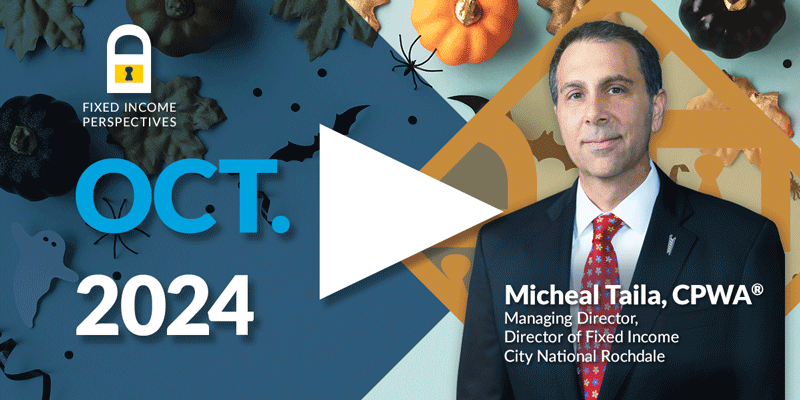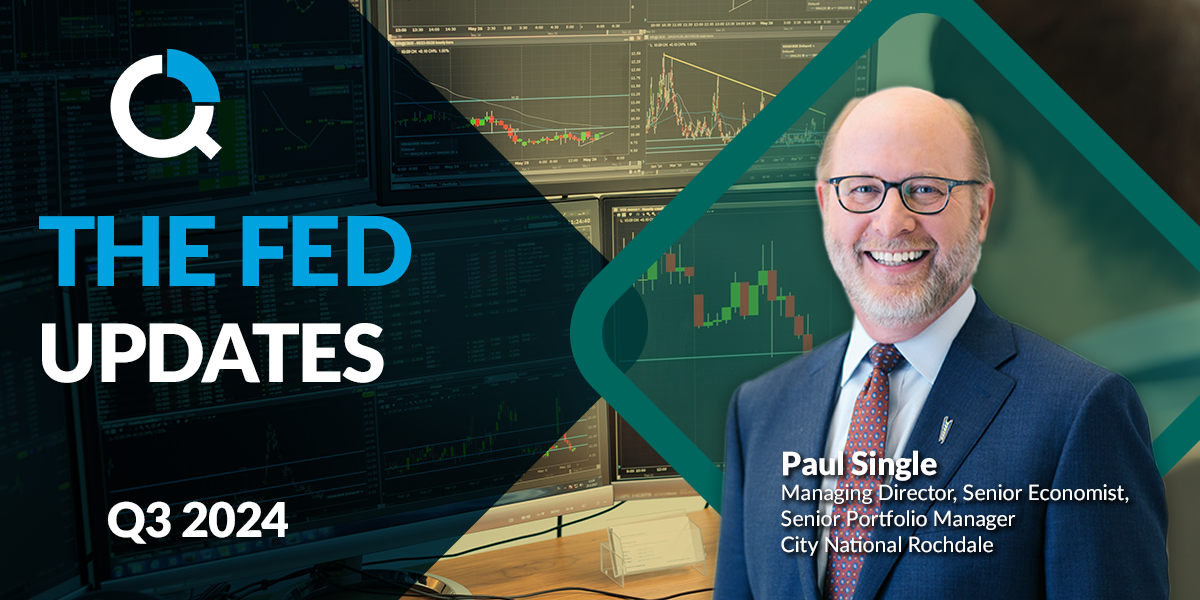

FAQs on the Markets and Economy
The yearly change in CPI has been falling for two months, so what happened to the enthusiasm?
There has been a change in optimism on the inflation front.
Last month, the release of the July Consumer Price Index (CPI) report showed that the yearly change in CPI fell from the June peak of 9.1% y-o-y to 8.5%. There was hope that the economy was entering a period of sustained disinflation. That implied the Fed would not have to be aggressive in its interest rate hikes.
But the recently released August CPI report threw some cold water on that view. Although goods inflation is falling due to reduced demand for many of the goods purchased during the pandemic and improved supply chain conditions, service inflation continues to move upward (see chart). Service inflation is stickier than goods inflation.
The service sector is heavily influenced by two sectors: housing costs (yes, housing is considered a service) and essential services (like eating at a restaurant or going to the dry cleaners, etc.), where labor costs are a critical component. The Fed has already helped orchestrate higher mortgage rates, helping to lower housing costs. The Fed’s goal now is to get rid of the imbalance in the labor market that is causing wages to move up. That means raising interest rates higher for longer to slow down demand.

What’s behind recent equity market volatility?
A hotter-than-expected consumer price index (CPI) report and negative-leaning Q3 corporate announcements last week triggered the biggest daily decline in the S&P 500 in over two years and drove interest-rate expectations higher.
Since its recent high reached in early August, the index has pulled back 10% and is now only 5.5% above June’s low.
The continuing reversal of this summer’s rally over the past month and a half is not very surprising. Bear market rallies are common and major bottoms tend to see a retest of previous lows. Investors continue to have a long list of uncertainties to ponder, including slowing US growth and overly optimistic earnings estimates, still-elevated supply chain challenges, China's economic concerns, Europe’s increasing energy crisis and the ongoing Russia-Ukraine war.
Most importantly, with the Fed committed to reining in price pressures, the persistence and breadth of inflation have provided an unwelcome reminder to markets that rates may stay higher for longer than anticipated. For some time now, we have maintained our above consensus views on recession probability, the upward path of Fed Funds, and geopolitical risks. Indeed, the phrase “higher for longer” has increasingly been used by Fed officials and market pundits, supporting our strategic thinking.
Given this, we continue to recommend caution over the near term. Bottoming will be a process that could take some time to play out, and further swings in sentiment are likely as investors gain greater clarity on the outlook, particularly with rate hikes and inflation, and weigh their implications for the economy and corporate profits. We suspect downward earnings revisions in particular could be a catalyst for additional market declines ahead before a sustainable recovery in equity prices can begin.

With lower gasoline prices, are consumers increasing their spending elsewhere?
Yes, consumer spending appears to be rebounding in the third quarter.
Gasoline prices peaked in mid-June at $5.02/gallon. Since then, they have fallen $1.33 to $3.69/gallon. They are now nearing the price they were at when the war in Ukraine started, $3.62 (see chart).
Lower gasoline prices have provided households with more disposable income. This, combined with improved consumer confidence, has been the catalyst for increased consumer spending.
Retail sales in August increased by 0.3% m-o-m, boosted by more robust auto sales, home building supplies and restaurant sales. As a result, consumption for the third quarter is expected to grow stronger than the growth rate of the first two quarters of this year.

What is the near-term outlook for high-yield municipal bonds?
We would be remiss not to acknowledge the challenging year in the broad financial markets.
A Fed tightening cycle and rising rates have taken center stage as investors weigh the economy's trajectory against the potential for further volatility. While returns are negative in fixed income so far this year, the decline in prices and other market forces have resulted in yields much higher today than in recent memory. For example, the Bloomberg Municipal High Yield Index yield-to-worst increased nearly 250 basis points (bps) since the beginning of the year to approximately 5.6% (or a federal tax-adjusted yield of almost 9%). For long-term investors that seek competitive streams of tax-exempt income, staying engaged and not overlooking relative value opportunities can lead to attractive forward-looking returns.
A significant contributor to high-yield municipal (HYM) bond performance is the demand for bonds, as evidenced by the flow of money into and from bond mutual funds. According to Lipper, the municipal market has experienced approximately $85 billion in fund outflows year-to-date, with HYM bond funds accounting for more than $13 billion. The HYM market also drives the demand for bond supply, with YTD HYM issuance running at about 50% of last year’s HYM supply, according to data from MMA. As we enter the year’s final quarter, volatility is likely to persist, perhaps affected by seasonal technical factors. Still, clarity surrounding monetary policy, which should support a more settled trading range for Treasuries, has the potential to firm up the HYM market. With HYM bond valuations attractive in long maturities, absolute yields present a good entry point to lock in cash flows and raise portfolio book yields.
The credit quality trends of HYM bonds are currently stable for many sectors, but careful security selection is critical in a late-cycle stage. According to MMA, defaults in the HYM market remain reasonably low. However, lingering pandemic-related implications and expectations for economic moderation might weigh on some of the riskiest borrowers. A prudent research process that enhances portfolio allocation and decision-making can benefit patient investors in the current environment.

Important Disclosures
The information presented does not involve the rendering of personalized investment, financial, legal or tax advice. This presentation is not an offer to buy or sell, or a solicitation of any offer to buy or sell, any of the securities mentioned herein.
Certain statements contained herein may constitute projections, forecasts and other forward-looking statements, which do not reflect actual results and are based primarily upon a hypothetical set of assumptions applied to certain historical financial infor-mation. Certain information has been provided by third-party sources, and although believed to be reliable, it has not been inde-pendently verified, and its accuracy or completeness cannot be guaranteed.
Any opinions, projections, forecasts and forward-looking statements presented herein are valid as of the date of this document and are subject to change.
There are inherent risks with equity investing. These include, but are not limited to, stock market, manager or investment style risks. Stock markets tend to move in cycles, with periods of rising prices and periods of falling prices.
Investing in international markets carries risks such as currency fluctuation, regulatory risks and economic and political instability.
There are inherent risks with fixed income investing. These may include, but are not limited to, interest rate, call, credit, market, inflation, government policy, liquidity or junk bond risks. When interest rates rise, bond prices fall. This risk is heightened with in-vestments in longer-duration fixed income securities and during periods when prevailing interest rates are low or negative.
Investing involves risk, including the loss of principal.
As with any investment strategy, there is no guarantee that investment objectives will be met, and investors may lose money.
Past performance is no guarantee of future performance.
This material is available to advisory and sub-advised clients, as well as financial professionals working with City National Rochdale, a registered investment advisor and a wholly-owned subsidiary of City National Bank. City National Bank provides investment management services through its sub-advisory relationship with City National Rochdale.
Non Deposit Investment Products are: Not FDIC Insured, Not Bank Guaranteed, May Lose Value
The information presented does not involve the rendering of personalized investment, financial, legal, or tax advice. This presentation is not an offer to buy or sell, or a solicitation of any offer to buy or sell any of the securities mentioned herein.
Certain statements contained herein may constitute projections, forecasts and other forward-looking statements, which do not reflect actual results and are based primarily upon a hypothetical set of assumptions applied to certain historical financial information. Readers are cautioned that such forward-looking statements are not a guarantee of future results, involve risks and uncertainties, and actual results may differ materially from those statement. Certain information has been provided by third-party sources and, although believed to be reliable, it has not been independently verified and its accuracy or completeness cannot be guaranteed.
Past performance or performance based upon assumptions is no guarantee of future results.
Indices are unmanaged and one cannot invest directly in an index. Index returns do not reflect a deduction for fees or expenses.
Any opinions, projections, forecasts, and forward-looking statements presented herein are valid as on the date of this document and are subject to change.
All investing is subject to risk, including the possible loss of the money you invest. As with any investment strategy, there is no guarantee that investment objectives will be met and investors may lose money. Diversification does not ensure a profit or protect against a loss in a declining market. Past performance is no guarantee of future performance.
This material is available to advisory and sub-advised clients, as well as financial professionals working with City National Rochdale, a registered investment adviser and a wholly-owned subsidiary of City National Bank. City National Bank provides investment management services through its sub-advisory relationship with City National Rochdale.
INDEX DEFINITIONS
S&P 500 Index: The S&P 500 Index, or Standard & Poor’s 500 Index, is a market-capitalization-weighted index of 500 leading pub-licly traded companies in the U.S. It is not an exact list of the top 500 U.S. companies by market cap because there are other criteria that the index includes.
Muni Bond: A municipal bond is a debt security issued by a state, municipality or county to finance its capital expenditures, including the construction of highways, bridges or schools. These bonds can be thought of as loans that investors make to local govern-ments.
Bloomberg Barclays U.S. Corporate High Yield Bond Index: measures the USD denominated, high-yield, fixed-rate corporate bond market.
Dow Jones Select Dividend Index: The Dow Jones U.S. Select Dividend Index looks to target 100 dividend-paying stocks screened for factors that include the dividend growth rate, the dividend payout ratio and the trading volume. The components are then weighted by the dividend yield.
CBO: A collateralized bond obligation (CBO) is a type of structured debt security that has investment-grade bonds as the underlying assets backed by the receivables on high-yield or junk bonds.
Moody’s: Moody’s Corporation (MCO) is the holding company that owns both Moody’s Investors Service, which rates fixed income debt securities, and Moody’s Analytics, which provides software and research for economic analysis and risk management. Moody’s assigns ratings on the basis of assessed risk and the borrower’s ability to make interest payments, and its ratings are closely watched by many investors.
Penn Wharton Budget Model: Penn Wharton Budget Model’s (PWBM) tax policy simulator allows policymakers, members of the media, and the general public (“users”) to see the impact that potential reforms to tax policy will have on many the economy and the federal budget.
NDMC: National Drought Mitigation Center (NDMC) The National Drought Mitigation Center’s mission is to reduce the effects of drought on people, the environment and the economy by researching the science of drought monitoring and the practice of drought planning.
NOAA: The National Oceanic and Atmospheric Administration (NOAA) is an American scientific and regulatory agency within the United States Department of Commerce that forecasts weather, monitors oceanic and atmospheric conditions, charts the seas, conducts deep sea exploration, and manages fishing and protection of marine mammals and endangered species in the U.S. exclusive economic zone.
USDA: The United States Department of Agriculture (USDA) is the federal executive department responsible for developing and executing federal laws related to farming, forestry, rural economic development, and food.
The SIFMA Municipal Swap Index: The Securities Industry and Financial Markets Association Municipal Swap Index is a 7-day high-grade market index comprised of tax-exempt Variable Rate Demand Obli-gations (VRDOs) with certain characteristics. The Index is calculated and published by Bloomberg. The Index is overseen by SIFMA’s Municipal Swap Index Committee.
CalPERS: The California Public Employees’ Retirement System, also known as CalPERS, is an organization that provides numerous benefits to its 2 million members, of which 38% are school members, 31% public agency members, and 31% state members.
4Ps: The 4P analysis is a proprietary framework for global equity allocation. Country rankings are derived from a subjective metrics system that combines the economic data for such countries with other factors including fiscal policies, demographics, innovative growth and corporate growth. These rankings are subjective and may be derived from data that contain inherent limitations.
Stay Informed.
Get our Insights delivered straight to your inbox.
Put our insights to work for you.
If you have a client with more than $1 million in investable assets and want to find out about the benefits of our intelligently personalized portfolio management, speak with an investment consultant near you today.
If you’re a high-net-worth client who's interested in adding an experienced investment manager to your financial team, learn more about working with us here


